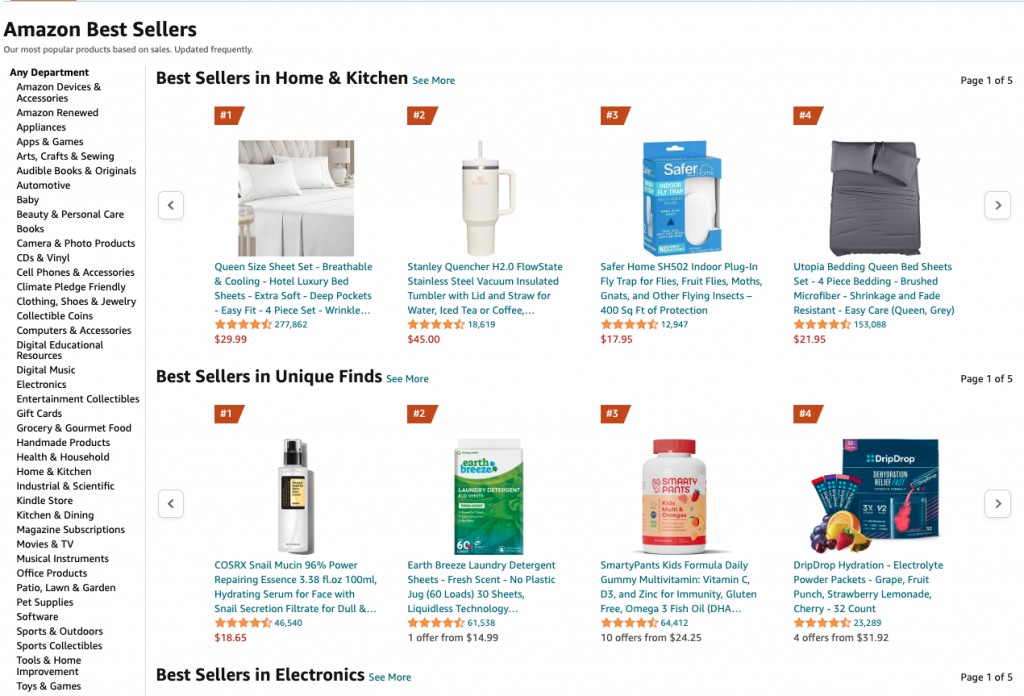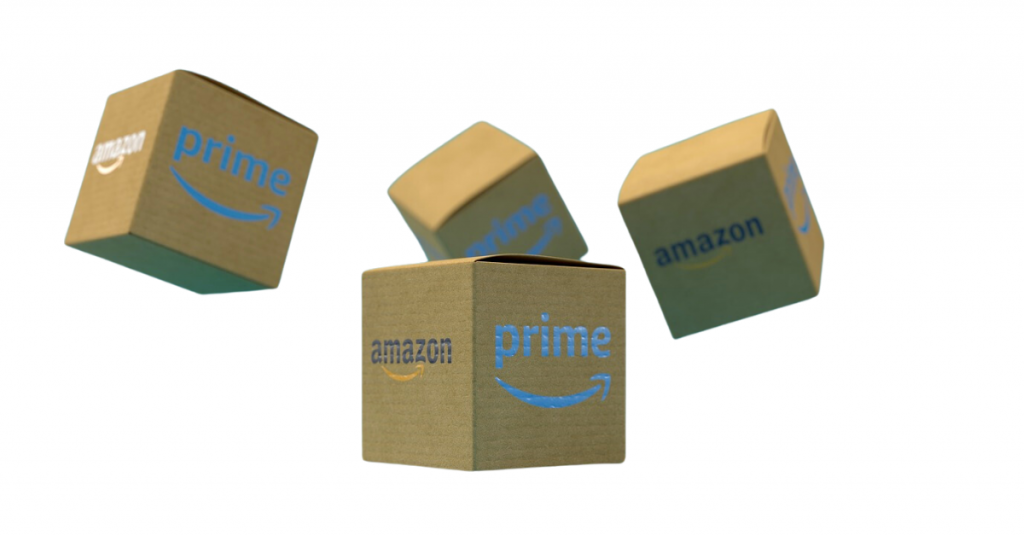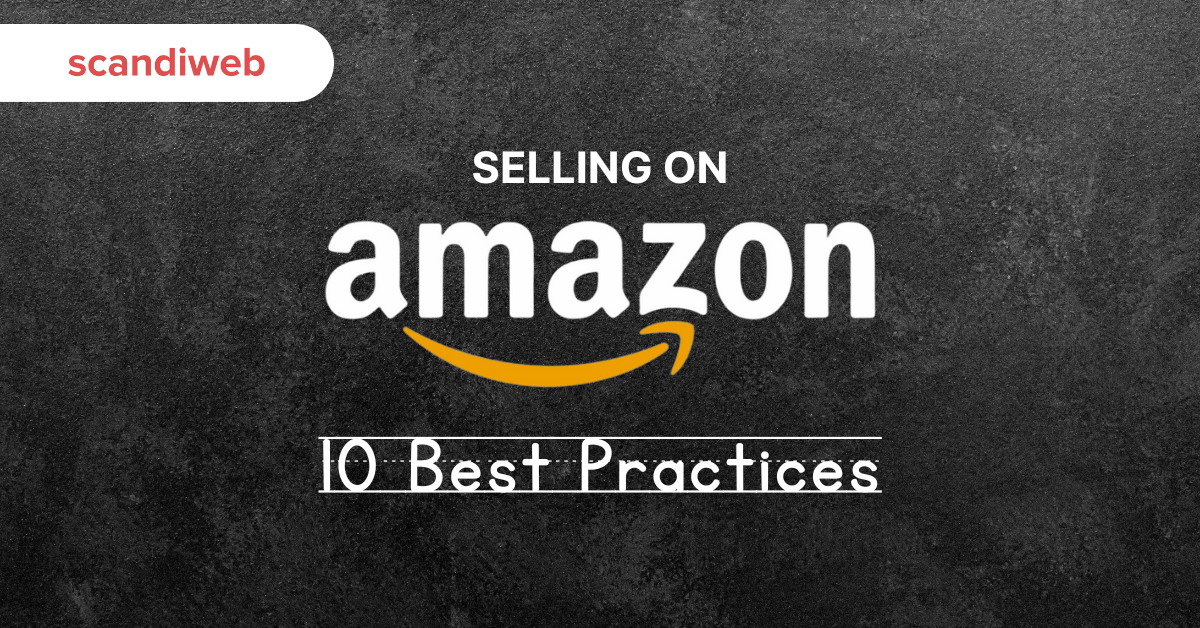Amazon, one of the world’s largest online marketplaces, offers immense opportunities for sellers to thrive. However, success on Amazon requires commitment and a strategic approach. In this article, we’ll explore 10 key best practices that can help you maximize your selling potential on Amazon.
1. Identify your niche
Before diving into the world of Amazon selling, take the time to carefully consider what you want to sell. You can start by researching popular product categories and niches by exploring the Amazon Best Sellers list. Pay attention to factors like price, customer reviews, seasonality, and product size to identify high-potential products.

Here are some questions you can ask yourself as you browse through that list to guide you in finding the best product to sell:
- How much do these products usually cost, and does this affect whether they’re considered affordable or offer good value?
- What do people who buy these products say about them? Are there things that customers like or dislike, and how can you learn from their feedback?
- Are these products big or heavy, and could shipping them cost more, making it harder to make a profit or sell them at a competitive price?
- Do these products sell better at certain times of the year, like during holidays or specific seasons?
- Who are the people most interested in these products? Should you focus on a particular group of customers, or should you aim for a broader audience?
Remember that thorough research is key. Don’t rush the process—take the time to ask and answer these questions diligently. Start by understanding the pricing dynamics and the feedback from previous buyers to identify opportunities for improvement. Be aware of seasonal trends and their potential impact on your sales strategy. And consider both the size and weight of the products you choose.
Lastly, carefully analyze your target audience and decide whether specializing in a niche or catering to a broader market aligns with your goals. By addressing these questions thoughtfully, you’ll pave the way for a successful and sustainable eCommerce venture on Amazon Marketplace.
2. Source your products
Once you’ve identified your products, it’s essential to determine how you’ll source them. You can either create your products, work with manufacturers, or leverage sourcing methods like dropshipping and print-on-demand. Research and select suppliers based on factors like quality, price, delivery times, and customer service to ensure a smooth supply chain.
Here are essential questions to guide your product sourcing decisions:
- What are the different methods available for sourcing products, and which one aligns best with your business model and storage capabilities?
- If you opt to work with a supplier, how can you ensure the quality of their products and services? What steps should you take, such as checking reviews and requesting samples?
- When assessing suppliers, how can you effectively compare prices, including shipping costs, to secure the most competitive deal?
- What is the typical delivery time for orders from potential suppliers, and how can you use this information to set accurate expectations for your customers?
- In the event of returns, what is the supplier’s policy, and how does it affect your responsibility and potential costs? Additionally, are there any restocking fees to be aware of?
Start by evaluating the various sourcing methods and select the one that harmonizes with your operational capabilities. When working with suppliers, prioritize quality by examining customer reviews and requesting samples to ensure customer satisfaction. In terms of pricing, perform meticulous comparisons, accounting for shipping expenses, to secure the best deal possible.
Additionally, keep delivery times in mind to set accurate customer expectations. Finally, be well-versed in the supplier’s return policy, assessing potential costs and implications, and weigh the benefits of any bulk discounts or branding options. By addressing these questions meticulously, you can make informed choices that lay a solid foundation for your business’s success and customer satisfaction.
3. Choose your sales channels
Decide where you’ll sell your products. Amazon provides a powerful platform, but you can also consider creating your own eCommerce website or using social media channels if they align with your target audience. Experiment with different sales channels to find the most effective strategy for your business.
Here are important things to consider when deciding on the most appropriate sales channels for your products:
- What type of products are you looking to sell, and who is your target audience? How do your answers influence the choice of sales channels that will effectively reach your customers?
- Are you considering selling exclusively on Amazon or also setting up your own website?
- Do you have a significant social media presence, and does your target audience actively engage on platforms like Facebook, Instagram, or Pinterest? How can social media channels be leveraged effectively for product promotion and engagement, including interactive methods like live streaming?
- Have you considered experimenting with a mix of sales channels, and if so, how can you balance and optimize them based on your unique business model and product offerings?
- Should you explore local sales channels such as classifieds or traditional media advertising to complement your online presence and attract a broader audience?
These questions will guide you in making informed decisions about the most suitable sales channels for your products, taking into account your product type, target audience, and the advantages offered by various platforms and marketing strategies.
You can create your own online store from scratch, or you can use a tool called Amazon store builder to build a unique shopping experience. With Amazon, you get a ready-made system for handling payments, managing customer reviews, and tracking how well your products are doing. They also provide you with a dashboard to see important sales and review data.
You can effectively sell through social media if your customers spend time on platforms like Facebook, Instagram, or Pinterest. And you can also use live streaming on platforms like Amazon Live to connect with shoppers in real time. This allows you to reveal new products and give personalized recommendations to boost your sales.
4. Understand listing and selling fees
Amazon, like other platforms, charges various fees for listing and selling products. Familiarize yourself with listing fees, selling fees, payment processing fees, and other costs associated with your chosen sales channel. Opt for a pricing plan that aligns with your sales volume and business model.
Amazon selling plans
Amazon has two selling plans: individual and professional. Go with the individual plan if you sell fewer than 40 units each month, and go with the professional plan if you sell more and want to advertise your products.

Other fees
There are other fees that might be applied, for example:
- Category referral fees – a percentage of each sale, determined by the product category
- Fulfillment fees – calculated based on the size and weight of the products when using Fulfillment by Amazon (FBA)
- FBA storage fees – determined by the daily average volume (measured in cubic feet) for the area your inventory occupies within Amazon fulfillment centers.
- Inventory fees – additional charges like fees for aging inventory and costs related to removal orders if you store inventory in an Amazon fulfillment center
- Refund administration fee – imposed by Amazon if you need to refund a customer for an order you’ve already been paid for; subtracted from the referral fee you initially paid
5. Optimize your shipping strategy
Shipping plays a crucial role in customer satisfaction. Consider offering free shipping to attract customers, but also calculate shipping costs and determine your shipping range. Decide whether you’ll handle shipping yourself or opt for Amazon’s Fulfillment by Amazon (FBA) service, which can provide fast and reliable shipping options.
Here are important questions to ask before making a decision:
- What will be the shipping expense, and what is the maximum distance you’re open to shipping the item?
- How does your choice to offer international shipping or limit sales to a local area affect your business strategy and potential customer reach?
- Are you aware of the trade-offs between handling shipping and processing yourself versus using services that handle product shipping for you, and how do these choices impact your profitability and convenience?
When a customer places an order on Amazon, there are two primary methods for fulfilling that order: Fulfillment by Amazon or Seller fulfillment. Many Amazon sellers find success by using a combination of both.
Fulfillment by Amazon (FBA)
When sellers register to sell their products on Amazon, they are automatically enrolled in the Fulfillment by Amazon (FBA) program. If they choose to participate, they send their inventory to Amazon’s fulfillment centers. From there, Amazon takes care of essential aspects, including shipping, managing customer inquiries, processing refunds, and handling returns for those products.
Amazon Prime shipping
Amazon Prime is highly sought after by customers because it guarantees fast and free shipping on eligible products. For most sellers, leveraging FBA is the most straightforward way to qualify for the Prime badge, increasing the appeal of their offers to potential buyers.
Seller fulfillment
While FBA is an efficient choice for many sellers, it may not be suitable for all products. Some items, such as hazardous goods or seasonal products subject to excessive storage fees, may not meet the requirements of Amazon’s fulfillment centers. Additionally, some sellers already have their logistics network in place or have specific business reasons for fulfilling their orders independently.
6. Invest in high-quality photos
Great product visuals can significantly impact sales. Capture well-lit, clear photos with a plain background, and avoid using filters. Include multiple images from different angles and consider adding product videos to enhance the shopping experience.

Here are some guidelines for the main product images on Amazon:
- Represent the product accurately with a professional-grade image, avoiding the use of mere placeholders.
- Feature a background in a pure-white color with RGB values of 255, 255, 255, ensuring a consistent shopping experience for customers on search and product detail pages.
- Display the product occupying 85% of the image space.
- Do not text, logos, borders, color blocks, watermarks, or other graphics that obstruct the product or occupy the background. In case of multi-piece products, maintain relative sizing without enlarging any single component.
- Capture the entire product within the image frame—do not crop or only partially display the product.
- Do not show accessories not included in the purchase or use props that may cause confusion among customers.
7. Create descriptive product listings
Detailed product listings act as your virtual salespeople. Use clear, concise language, avoid jargon, and implement SEO best practices to help your listings rank higher in search results. Highlight key features and benefits to assist customers in making informed decisions.

Here are some things to remember when crafting your Amazon product page content:
- Showcase one primary benefit in your product title.
- Enhance and streamline your product’s key features section to spotlight the five most significant advantages that resonate with your buyers. Potential buyers will quickly scan this section, evaluating each feature’s relevance to their needs.
- Craft a product description that clearly communicates how your product benefits the buyer. Expand on key product features and emphasize additional advantages that matter to your target audience.
- Use bullet points for your product description, starting each item with a capital letter. Highlight key benefits and features and incorporate important keywords strategically.
- Optimize for Amazon’s A9 SEO algorithm. Prioritize incorporating keywords that align with popular customer queries. A9 considers your sales performance, so focusing on improving sales is crucial for ranking. New sellers can enhance visibility and sales by investing in Amazon’s sponsored ads alongside optimizing for search.
8. Price your products strategically
Set competitive prices that allow for a reasonable profit margin after considering all costs. Analyze competitor prices, use Amazon’s pricing tools, and assess the perceived value of your products to determine the right pricing strategy.
To gain insights into pricing ranges and formulate your pricing strategy, it’s valuable to examine the prices set by your competitors. Here are three approaches you can take:
- Conduct research on Amazon by using its search function, exploring product categories, and delving into specific items that align with your business objectives.
- Utilize the Amazon Seller app to track competitor prices and use reference points such as matching the lowest price and the Featured Offer price.
- Employ the Automate Pricing tool to dynamically set your prices in response to market demand.
By assessing the relative value of your products compared to similar offerings, you can then decide whether to lower your prices (to attract budget-conscious customers) or enhance the perceived value (e.g., by introducing additional color choices).
9. Pay attention to packaging
Ensure that your products arrive in perfect condition by investing in appropriate packaging materials. If you’re using FBA, Amazon’s packaging specialists can handle this for you. For self-fulfillment, choose the right-sized packaging, include cushioning materials, and label packages accurately.

For effective packaging when handling your own order fulfillment on Amazon, consider these packaging recommendations:
- Choose the appropriate sizes. Ensure that boxes, envelopes, and packaging materials offer enough space to accommodate the product and any extra protective materials. Avoid excessive room to prevent potential damage.
- Incorporate protective cushioning. Safeguard your items in transit by using cushioning materials such as bubble wrap, foam peanuts, or air pillows.
- Ensure the package is tightly sealed. Use strong tape to securely seal the box, minimizing the risk of it opening during shipment.
- Include a packing slip. Place a packing slip inside the package featuring the customer’s name, address, and order specifics.
- Accurately label the package. Use the correct shipping label containing the customer’s address and a return address to prevent items from being misrouted to the wrong destination.
10. Prioritize customer satisfaction
Ultimately, your success on Amazon hinges on keeping your customers happy. Monitor and respond to customer reviews promptly, addressing their concerns and feedback. Consider offering incentives for repeat customers, such as discounts or bonus gifts, to build loyalty and encourage future purchases.
Consistently monitor customer feedback and reviews
Regularly check your Amazon product listings for new reviews and feedback. Analyze star ratings and written reviews to understand customer experiences and discover areas for improvement.
To keep an eye on reviews, use Amazon’s Customer Review Insights tool. It helps you understand what customers think about a product or category, so you can make your products better.
Examine feedback trends to inform product enhancements and refine your selling strategies. Promptly respond—ideally within 24 hours—to customer inquiries to build rapport and prevent unanswered questions from lingering in your inbox.
Benefit from Amazon support for FBA orders
For Fulfilled by Amazon (FBA) orders made within 30 days of purchase, guide customers to contact Amazon support. Encouraging direct communication with Amazon ensures quick issue resolution and lessens the seller’s workload.
Handling returns after the 30-day period
After the initial 30-day return window has elapsed, sellers face a choice regarding returns. Consider issuing refunds to maintain customer satisfaction and prevent negative reviews. Refusing returns could lead to dissatisfied customers and the possibility of receiving negative feedback, potentially affecting your reputation as a seller.
Wrapping up
Selling on Amazon can be a lucrative venture if you follow these best practices. Remember that success may not happen overnight, but with dedication, smart strategies, and a focus on customer satisfaction, you can thrive in the world of eCommerce on Amazon.
Ready to supercharge your Amazon sales? We’ve got your back! From setting up your Amazon store to optimizing your product listings, we’re here to help you succeed on the platform. Reach out today for a free consultation.


Share on: